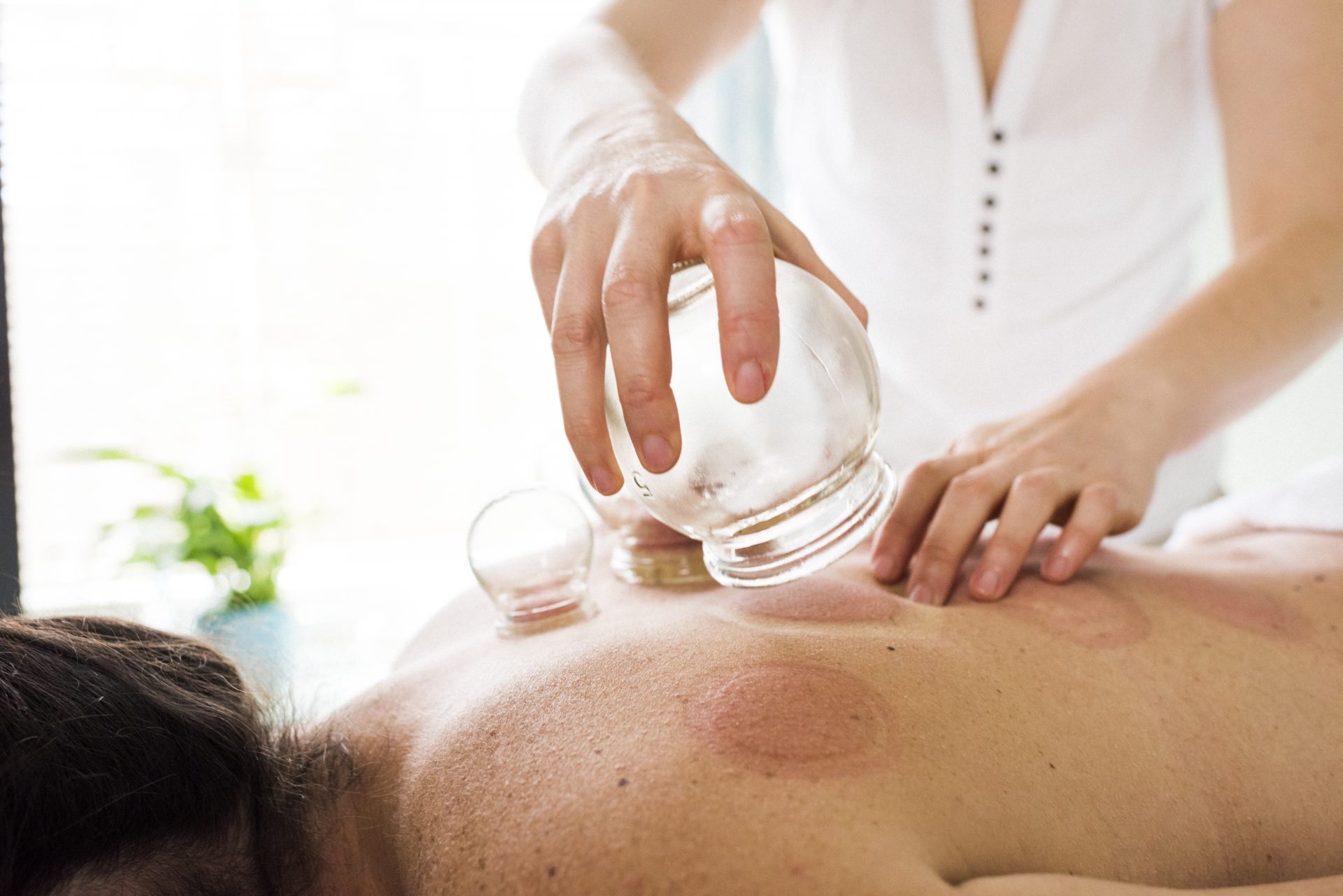Cupping therapy is a well-known alternative therapy – but is it actually good for you and your muscles?
There’s a never-ending list of treatments you can try that promise to support your body and improve your workout performance. From thefact-based advice, such as eating enough protein and prioritising sleep, to the wackier trends (hello, IV drips), there’s something for everyone.
Somewhere in the middle lies tissue therapies. You’ve probably tried – or at least heard of – some of these, such as sports massage and foam rolling. But have you ever considered using cupping to ease muscle tightness?
You may also like
Back pain: how an osteopath helped my scoliosis (and why you should see one ASAP)
It’s a slightly more extreme form of tissue therapy, thanks to the obvious bruises it leaves. If you’ve ever seen an Olympic swimmer with markings on their body as though as an octopus has got their suckers on them, you might know what we’re talking about. So, if it’s good enough for professional athletes, is it worth it for you too?
What is cupping?
“Cupping is a type of therapy originating from China that involves placing cups on the skin to create a suction,” says cupping therapist Ada Ooi. This is an ancient tradition that is often used in relation to ‘qi’, the bodies energy flow, but is also used as a form to support the physical body.
“The practitioner creates a suction from a special pump to vacuum out the air once the cups are on your skin, or by heating the cup before placing it on your body. How long the cups stay on your skin depends on what is being treated. It could be a few minutes or could be up to half an hour,” says Ada. “For some treatments, ‘moving cupping’ can be used, where the cups are moved around the body to guide the flow of blood, but a lot of the time the cups remain static on the body.”
What are the benefits of cupping?
“Cupping works by increasing blood flow to your fascia and muscles and stimulating the lymphatic system,” says Ada. “It can bring in oxygen and nutrients and guide immune cells into the particular area to loosen tension.”
The idea is pretty much “out with the bad, in with the good”, explains Ada, as stimulating blood flow to the area can help with inflammation. It makes sense as a practice – the body naturally stimulates blood flow to injured areas (hence the redness, heat and swelling when you hurt yourself). Cupping is simply an extension of that, promoting natural healing benefits, but can also be “especially great for people who might have been suffering from chronic tension, to a point that their ‘knots’ are too hard or too sore to touch and break up adhesions that are blocking flow,” says Ada.
You may also like
Feeling stiff and achy? You might want to pay attention to your body‘s fascia
Research has shown that cupping can help to ease pain and relax muscle tissue: a 2017 study from Illinois State University found that cupping eased IT band tension and improved hip mobility 24 hours after four stationary cups were placed along the area in question. But research is limited and there’s no official consensus as to whether or not the treatment works in practice as well as it does in theory.

I’ve had cupping once – a somewhat unplanned event that was recommended during a sports therapy session I’d attended for my tight shoulders and back. The therapist explained that they were applying cups to encourage blood flow to the treated muscles after breaking down the knots using massage. This was to remove the waste products that are released both during exercise and massage, but also to encourage my body to heal the broken tissue. The cups felt warm when applied and a little uncomfortable when on (although the area was already pretty numb from the massage).
I can’t say whether it was the massage or cupping that helped ease my tight shoulders. But, after getting over the initial muscle sensitivity that I find lasts up to 48 hours after tissue therapy, I definitely felt looser.
You may also like
Master these self-massage techniques from the experts at Lush Spa
The only problem was those huge bruises, which made me look as though I’d been abducted by aliens. They didn’t necessarily hurt for that long, but they did take a while to go down. “If your cupping marks are very angry, massaging something like arnica gel into the area can help promote healing and reduce discomfort,” advises Ada.
“If you don’t feel any further discomfort, you can continue to use a heating pad or hot water bottle on the cupped areas to promote circulation and relax the muscles. Sometimes people feel tired or have the flu like symptoms after cupping – a temporary reaction by your immune system to the cellular waste that cupping helps to release. Listen to your body and rest if you need to.”
So, is cupping worth it? Well it probably shouldn’t be your first port of call if you’re after a way of ridding muscle tension, but it can be a great option for those who are looking for alternative and complementary tissue therapies to ease stiff muscles. But let’s be honest: if you’re hoping to get out in a backless dress after lockdown, you could opt for a less bruise worthy treatments.
For muscle recovery stretches and mobility workouts, check out the SWTC How-To page for step-by-step tutorials.
Images: Getty / Chloe Gray
Source: Read Full Article
